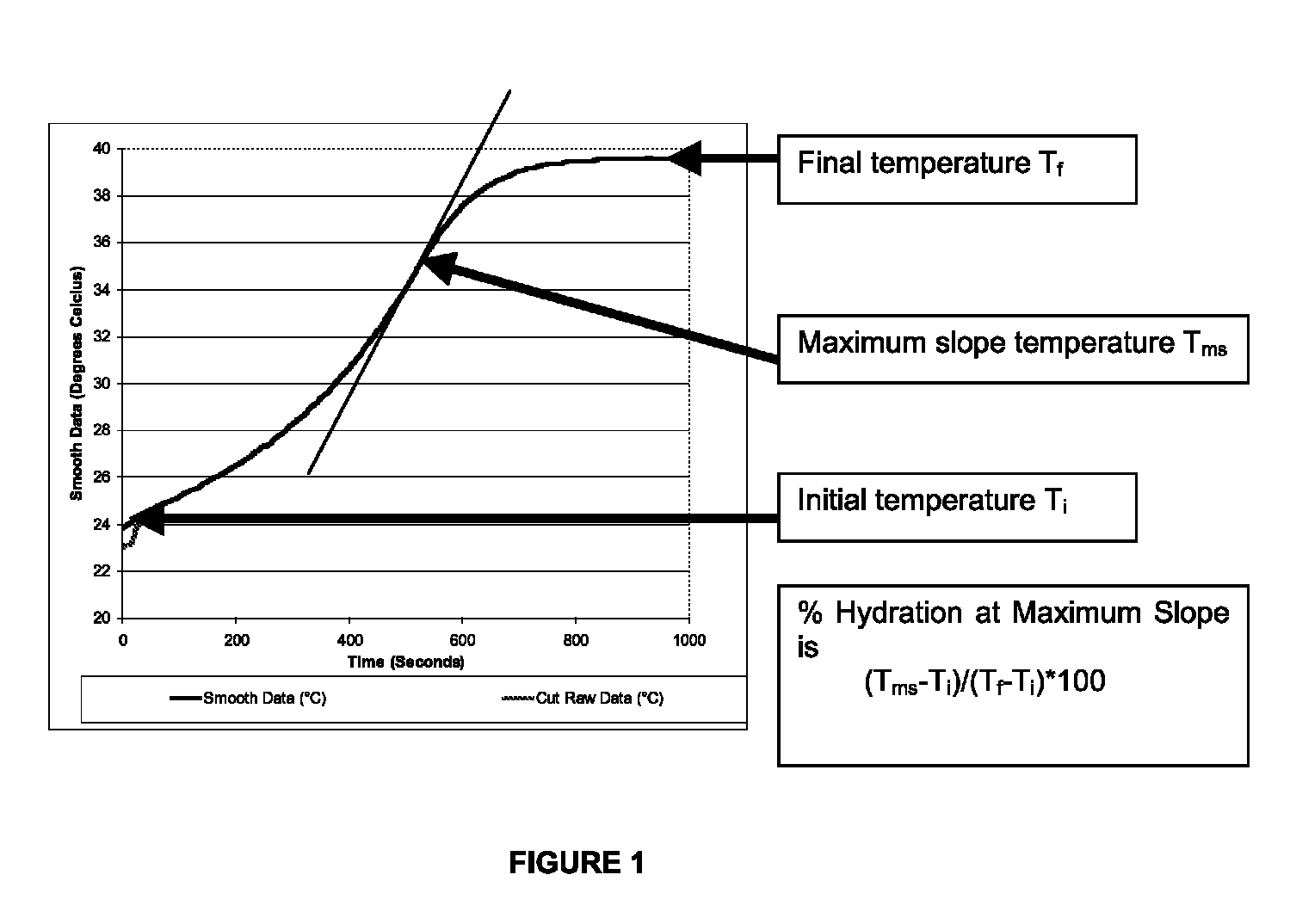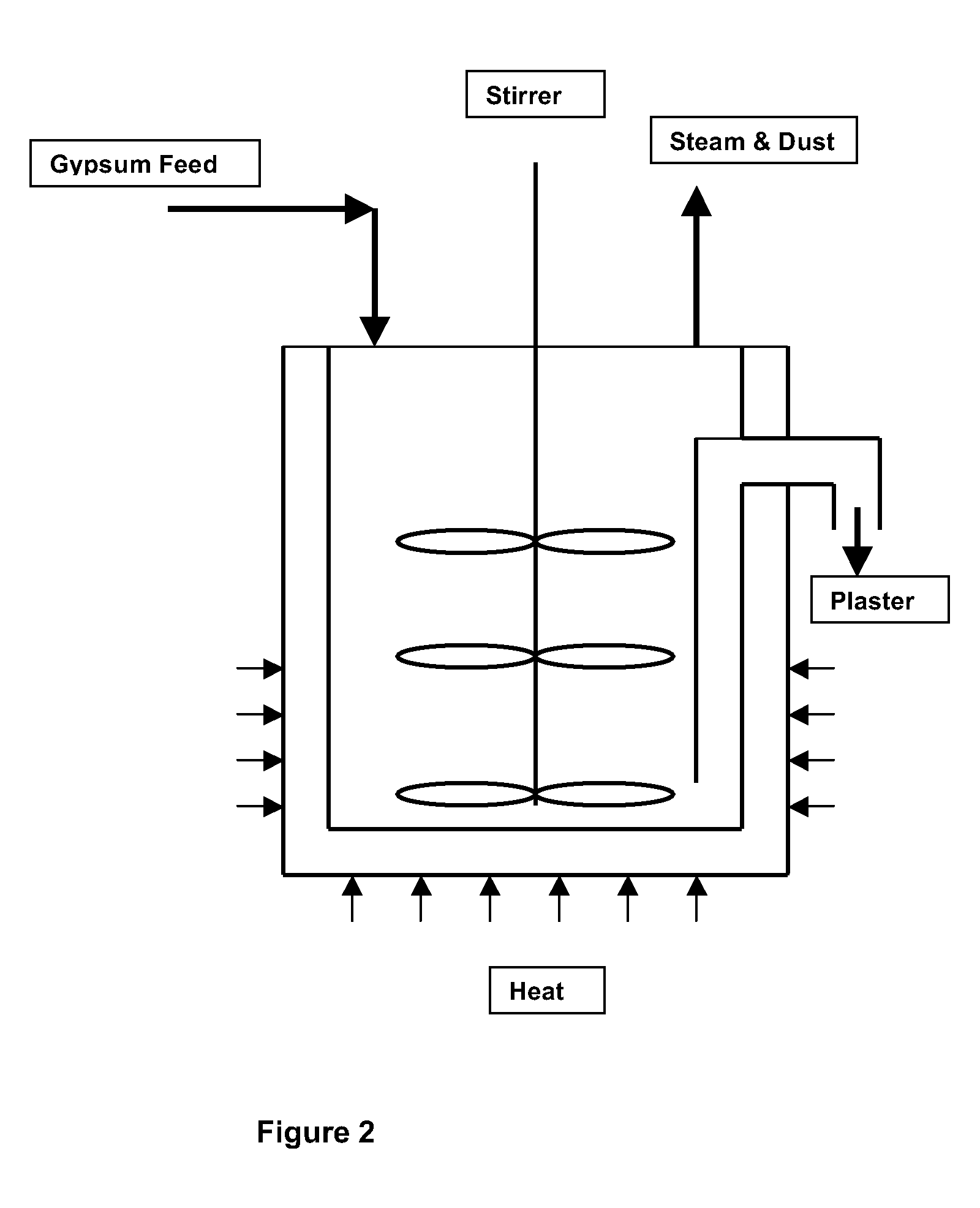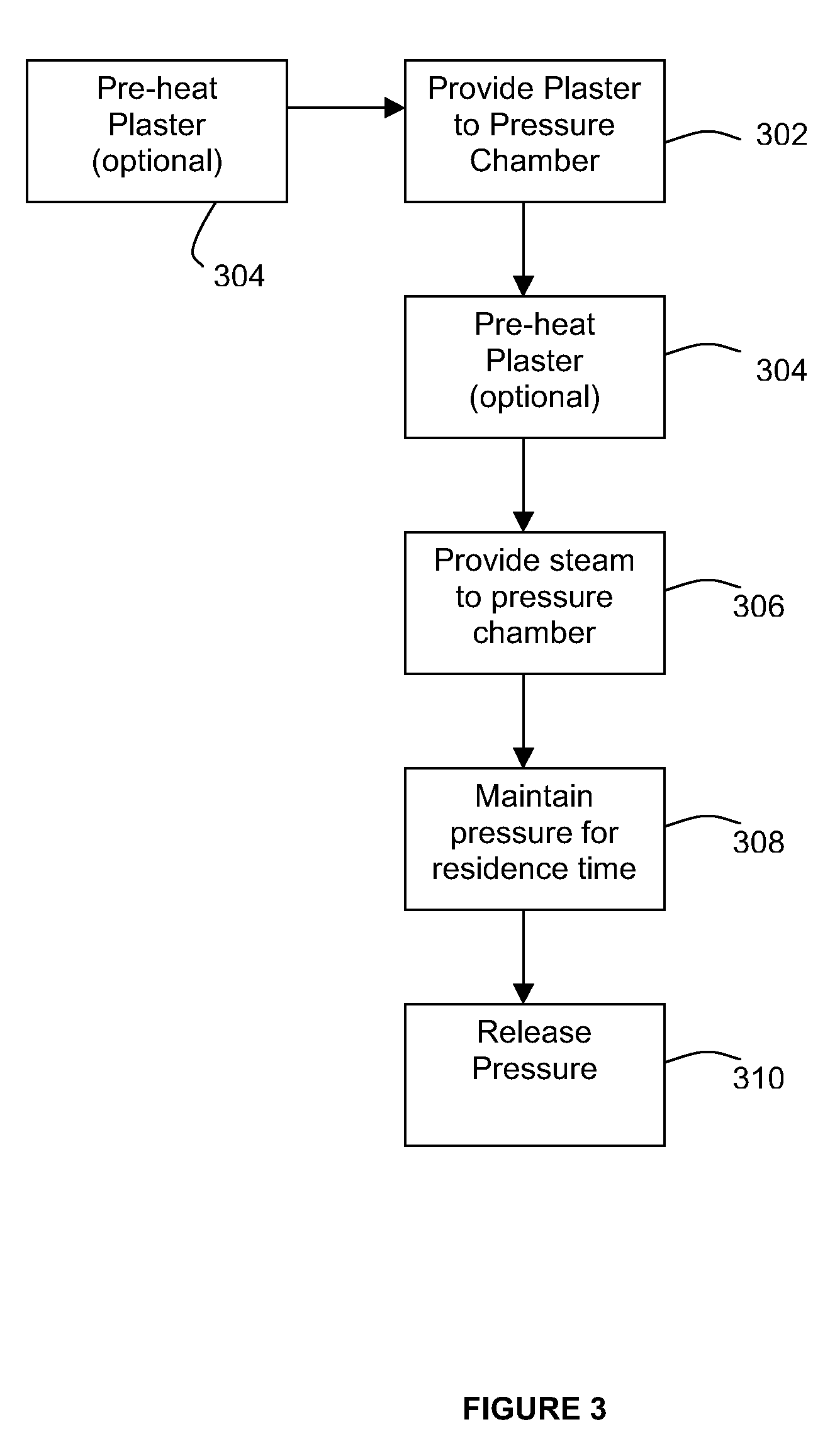Calcium sulfate hemihydrate treatment process
a technology of beta calcium sulfate and treatment process, which is applied in calcium/strontium/barium sulfates, inorganic chemistry, calcium apparatus and processes, etc., can solve the problems of reducing the water demand of the treated plaster, and achieve the reduction of the compressive strength of the cube, the effect of reducing the water demand
- Summary
- Abstract
- Description
- Claims
- Application Information
AI Technical Summary
Benefits of technology
Problems solved by technology
Method used
Image
Examples
example 1
Treatment of Natural Gypsum Hemi-Hydrate Plaster
[0084]A laboratory scale continuous kettle calcination was performed using three natural gypsum samples; a lower purity sample called LP2 from USG, Chicago, USA, a high purity gypsum sample called HP1 used in the manufacture of gypsum board, and a high purity very finely ground gypsum called Terra Alba (TA) also sold by USG, Chicago, USA. Calcination temperatures for the 3 gypsum samples were 160° C., 160° C. and 165° C. respectively, which correspond to the initial plaster temperatures in the treatment process. This kettle has been shown in previous studies to be an accurate model of production kettles currently in use around the world. The gypsum phase analysis of this plaster showed the purity levels to span the range that would be considered typical of what is commonly in use around the world. A diagram of the laboratory kettle apparatus is shown in FIG. 2 and is described below.
[0085]The treatment process was carried out using a p...
example 2
Different Gypsum Types
[0092]Much of the gypsum used in North America today is the synthetic gypsum that is produced by the scrubbing of flue gases containing sulfur dioxide from coal burning power plants, commonly called flue gas desulfurization gypsum or desulfogypsum. A sample of flue gas desulfurization gypsum (LDSG) was obtained from a commercial gypsum board plant, the gypsum being produced at the OPG Lambton generating station near Sarnia, Ontario. As for Example 1, the treatment process was undertaken for freshly calcined plaster produced by the laboratory continuous kettle at a calcination temperature of 160° C., once again this corresponding to the initial plaster temperature. The overall temperature of the chamber prior to addition of the plaster was approximately the calcination temperature to make sure that the plaster was not cooled by the pressure chamber. The steam was provided by a boiler operating at 150° C. The pressure inside the chamber was monitored and steam wa...
example 3
Treatment Pressure and Treatment Time
[0095]The previous examples showed that with increasing treatment time there was a corresponding increase in the reduction of the machine mix water demand. Tests were also undertaken at different pressures to determine if the overall pressure of steam treatment would have an impact on the rate and degree of water demand reduction. Continuously produced laboratory scale kettle plaster was subjected to treatments at various times and pressures. The results are shown below. MB refers to the moisture balance measurement, the overall weight loss expressed as percentage that takes place upon heating of the sample up to 200° C.
[0096]The treatment process was undertaken for freshly calcined plaster produced by the laboratory continuous kettle at a calcination temperature of 180° C. and 146° C., once again this corresponding to the initial plaster temperatures. The overall temperature of the chamber prior to addition of the plaster was approximately the c...
PUM
| Property | Measurement | Unit |
|---|---|---|
| pressure | aaaaa | aaaaa |
| temperature | aaaaa | aaaaa |
| pressure | aaaaa | aaaaa |
Abstract
Description
Claims
Application Information
 Login to View More
Login to View More - R&D
- Intellectual Property
- Life Sciences
- Materials
- Tech Scout
- Unparalleled Data Quality
- Higher Quality Content
- 60% Fewer Hallucinations
Browse by: Latest US Patents, China's latest patents, Technical Efficacy Thesaurus, Application Domain, Technology Topic, Popular Technical Reports.
© 2025 PatSnap. All rights reserved.Legal|Privacy policy|Modern Slavery Act Transparency Statement|Sitemap|About US| Contact US: help@patsnap.com



